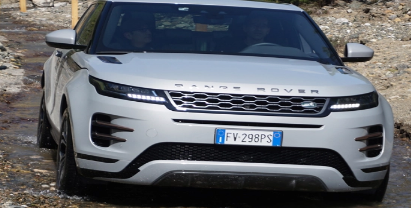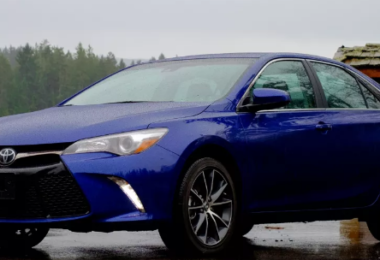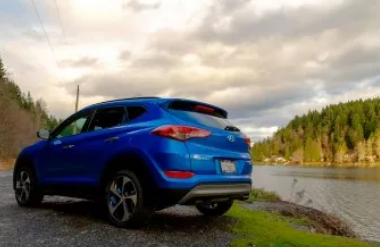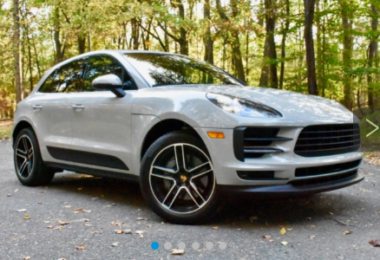In 2012, the Evoque made its debut, and the premium crossover market was still developing. Coming from a time when hulking brutes like the Cadillac Escalade were the standard for what a fancy SUV should be, the thought of a little, luxurious sport-utility vehicle seemed absurd.

Many people’s opinions were, however, altered by the first-generation Evoque, and Land Rover would go on to sell over 800,000 units of the stylish small vehicle throughout its eight-year run. But perhaps the most damning proof that Land Rover’s entry level four-wheeler needed an upgrade was the fact that segment sales as a whole increased dramatically last year, while the Evoque’s sales decreased.
Fair enough, some of that decline may have been caused by people waiting for the second-generation Evoque that we now have. Land Rover definitely had no intention of phoning this one in as it features a whole new platform with a little longer wheelbase, upgraded sheet metal, and a completely redesigned interior. There is simply no room for hubris in this very competitive market with competitors like the Volvo XC40 and BMW X3 – both of which significantly undercut the Evoque’s $43,645 starting price.
But our well-equipped tester costs a lot more money than that. The price is $59,215 with destination when equipped with optional accessories over and beyond the First Edition package supplied above, such as adaptive suspension and 21-inch wheels.
Does the new Evoque live up to the expectations that a price tag of almost $60,000 raises? To discover out, we made our way to some hills outside of northeast Los Angeles.
Outside And Inside
The second-generation Evoque is readily identifiable despite having all new bodywork. Land Rover decided to improve the crossover’s design rather than completely redo it, and the streamlined outcome is unquestionable evidence that crossovers can draw attention. However, the design has been greatly tidied up, demonstrating a greater focus on cohesiveness and modernity. The Evoque’s rakish roofline and call-out visual signals are still there.
The tale keeps going inside the cabin. The Land Rover InControl Touch Pro Duo system, which consists of two 10-inch high definition displays and handles audio, navigation, Apple CarPlay and Android Auto integration, general phone tasks, HVAC control, and vehicle behavior settings, has replaced the dated infotainment interface and center stack. The majority of system operations are controlled by touch inputs, but Land Rover made the smart decision to keep a physical volume knob and two larger multi-function knobs below it that make adjustments more convenient while driving.
We have already seen this feature in other JLR automobiles, such as the Jaguar I-Pace. The system looks nice, with bright visuals and a generally intuitive interface, but similar to our experience in Jag’s EV, its input response occasionally falls short of expectations. Additionally, because of their propensity to produce glare, glossy screen surfaces can be challenging to read quickly.
Overall, though, the 2020 Evoque’s interior is a pleasant place to be, with high-quality touch points and a minimalist aesthetic that comes across as uncluttered rather than spartan.
Driving the vehicle
The Evoque rides surprisingly well around town, absorbing minor collisions without complaint with the optional adaptive suspension set to its most relaxed mode while also attenuating road noise despite our tester’s 21-inch rollers. The response becomes substantially firmer when the drive mode is changed from Comfort to Dynamic, but it is still far from disagreeable for the majority of regular driving scenarios. The well-weighted steering and sensitive brake pedal offer the Evoque sure-footed confidence on twisting stretches of pavement, despite the fact that it isn’t very sporty.
The Evoque falters a little bit in the powertrain, though. Two versions of the crossover’s 2.0-liter turbocharged four-cylinder engine are available. The regular engine produces 246 horsepower and 269 pound-feet of torque, while R-Dynamic models add a mild hybrid system to the mix and see a significant output boost to 295 horsepower and 296 lb-ft.
Although the Evoque may be moved around with a fair amount of speed using the former’s grunt, the overall response is far from ideal. Off-the-line throttle response is so subpar that we had to reevaluate how we drove the car, even with auto stop/start deactivated, the drive mode set to Dynamic, and the transmission in performance mode. In those conditions, if you drop the hammer from a complete stop, you’ll still have time to utter the phrase “What the…” before anything like a frantic acceleration kicks in. The issue will only worsen if auto stop/start is turned back on and the vehicle’s default driving settings are used.
The nine-speed automated transmission on the Evoque also doesn’t help. In practically every driving circumstance, the transmission seems to be continually looking for a different gear, and large throttle inputs frequently cause the gearbox to pause for a time as it mulls its next move. Some of this can be mitigated by using the shift paddles to take over manual shifting, but if you want to do so, you’ll need to prepare for an upshift in the middle of a passing maneuver.
Where the road ends, however, the crossover does gain a few points, making this an additional area of interest where the Evoque distinguishes itself from its nearest competitors. The Evoque’s off-road capability isn’t just lip service; it comes with 8.3 inches of ground clearance, a wading depth of up to 23.6 inches, and a 25-degree approach angle. Additionally, features like the speed-adjustable Hill Descent Control, All-Terrain Progress Control, and off-road camera that shows potential obstacles in the Evoque’s path remove a lot of the guesswork involved in getting from point A to point B in the rough stuff. But for prospective owners who regularly travel off the established route, we’d definitely advise a smaller wheel and tire set with greater sidewall.
How DT would set up this vehicle
Even though our First Edition tester had plenty of amenities, if we were to focus on the top of the Evoque line, we’d probably choose the R-Dynamic SE P300 in Firenze Red Metallic, which has a starting price of $52,145. The package comes standard with 20-inch wheels, 16-way adjustable front seats, the Touch Pro Duo infotainment system, Meridian premium audio, a 360-degree camera system, adaptive cruise control, automated emergency braking, and several other goodies in addition to the mild hybrid system’s advantages and added power.
Our View
The second generation Evoque provides a wonderful first impression since it is attractive and comfortable to be in. That will probably be sufficient to persuade prospective buyers away from compelling alternatives like the Porsche Macan and Audi Q5, as well as more affordable alternatives like the aforementioned Volvo XC40 and BMW X3, for those who value the brand’s cache or require the off-road capability that the Evoque offers.
However, for those who don’t, the Evoque’s high price and troublesome powertrain would probably cause most crossover purchasers to make this a heart-over-mind purchase.
You can also check 2020 Cadillac XT6 first drive review, Price, and other things you need to know about this product







